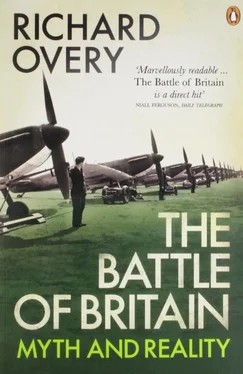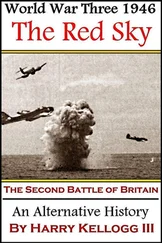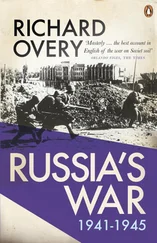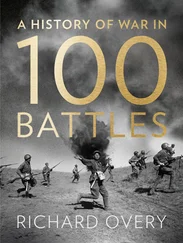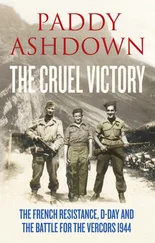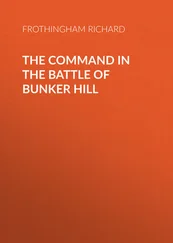By day the bomber force gradually disappeared. It was substituted by large formations of fighters, a small group converted to a fighter-bomber role with the addition of one 250 kg bomb, and an escort of between 200 and 300 combat fighters. The shift had two purposes. First, fighter bombers could keep up the pressure on the urban population by regular small-scale attacks which strained already jangled nerves; second, the fighter sweeps were intended to engage Fighter Command in a steady war of attrition to try to complete the process of wearing down the fighter force begun in July. The strategy made sense only in the light of the persistent misrepresentations of Fighter Command strength by German Air Intelligence, which continued to assert that the enemy was down to its last 200–300 aircraft and that British aircraft production was falling sharply under the hail of bombs. In October, 253 of the nuisance raids were mounted; in November, 235. 64Aircraft flew at altitudes well above 20,000 feet, where the Me 109 was at an advantage thanks to its two-stage engine supercharger. At such heights the slow ascent from RAF airfields to meet the enemy proved a grave handicap and loss ratios began to favour the attacker.
Fighter Command switched tactics once more. Standing patrols of high-flying Spitfires were used to reconnoitre incoming fighter sweeps. On sighting the enemy, other fighter squadrons patrolling at lower altitudes flew up to battle stations. Air fighting at high altitude brought new difficulties. British aircraft did not have pressurized cabins and the hood was prone to leak at altitude, inducing terrible cramps for the unfortunate pilot. Fighting at high altitude was more physically draining, particularly for RAF squadron commanders whose average age was almost thirty. Losses in October totalled 146 Hurricanes and Spitfires; German air fleets lost 365 aircraft, of which a high proportion were bombers subject to increasingly hazardous flying in the late autumn nights. 65Nevertheless the loss of pilots in Fighter Command was down to only 10 per cent of the force in October, and in November losses of both aircraft and pilots fell to a new low point as the daylight air battle died away as falteringly and inconclusively as it had started.
From October the German leadership placed its faith in the political impact of bombing for want of any other form of direct pressure on Britain. Some airmen favoured a short and brutal campaign of terror against British cities and food supplies to bring a swift capitulation, along the lines first outlined by the Italian General Giulio Douhet in his classic study of air power published in 1921, Command of the Air . The ‘England-Committee’ of Ribbentrop’s foreign office also strongly favoured a short terror campaign to drive the inhabitants of the East End of London across what they called the ‘social fault line’ into the West End, where London’s well-to-do would be frightened into making peace from fear of social revolution. 66
Though the German Air Force never formally adopted terror bombing, the tactics of widely scattered attacks, the use of a special incendiary squadron to start fires for other bombers to follow, the relaxation of rules of engagement over London on moonless nights, the deliberate decision to target the enemy psychologically by attacking intermittently round the clock (and for as long as possible at night), the use of aerial mines and the targeting of administrative areas of the capital, all reveal the gradual abandonment of any pretence that civilians and civilian morale would not become targets. The death of more than 40,000 people during the Battle of Britain and the Blitz may not have been deliberate policy, but must surely stretch the idea of ‘collateral damage’ beyond the limits of meaning. In Berlin Goebbels gloated in his diary almost daily throughout the last months of 1940 over the horrors of air warfare. ‘When will Churchill capitulate?’ he asked in November. On 5 December he noted the frightful reports from Southampton: ‘The city is one single ruin… and so it must go on until England is on her knees, begging for peace.’ On 11 December Goebbels heard Hitler address the Party bosses: ‘the war is militarily as good as won… England is isolated. Will bit by bit be driven to the ground.’ 67
I think we have managed to avoid losing this war. But when I think how on earth we are going to win it, my imagination quails.
HAROLD NICOLSON, DIARY, 8 NOVEMBER 1940 1
We shall win, but we don’t deserve it; at least we do deserve it because of our virtues, but not because of our intelligence.
WINSTON CHURCHILL, 10 AUGUST 1940 2
Britain was not driven into the ground in 1940 and Germany did not win the war. These statements are commonplace enough. The difficulty is to decide what, if anything, connects them, for the Battle of Britain did not seriously weaken Germany and her allies, nor did it much reduce the scale of the threat facing Britain (and the Commonwealth) in 1940/41 until German and Japanese aggression brought the Soviet Union and the United States into the conflict. The issues in 1940 cannot be reduced to a simple dividing line between victory and defeat.
In the first place the threat from the German Air Force was just one of the problems Britain faced in the autumn and winter of 1940. The war against Italy in north and east Africa was a major contest, whose outcome was just as critical for the long-term survival of Britain’s global imperial position. In August Italian armies invaded Somaliland, and in September crossed into Egypt. The large Italian Navy forced Britain to fight a major naval campaign in the Mediterranean at a time when ships were desperately needed for defence against invasion and to protect the vital trade routes across the Atlantic on which Britain’s long-term survival depended. This war against Italy exposed how fragile Britain’s position was in 1940, fighting two European great powers, her navy under constant submarine threat, the economy in crisis, a predatory Japan in eastern Asia, waiting for Britain’s star to fall like France before her. In the end only a small portion of the war effort of Britain and the Commonwealth was exerted against the German Air Force in the autumn war in the air.
The German threat itself was only partly reduced as a result of the air battles. In late November 1940 a pessimistic Churchill was reportedly still anxious that Germany ‘will strive by every means to smash us before the Spring’. 3The one thing that the Battle of Britain could not prevent was the bombing. Even during the daylight clashes between July and September, a high proportion of bombers reached and bombed their targets. German air fleets could not bomb at will, and they sustained what proved to be debilitating loss rates by day, but there was no effective way of preventing bombing, even when the navigational beams were finally jammed by British counter-measures in November. The factors that undermined the effectiveness of the bombing campaign both by day and by night were self-inflicted: bomb attacks were carried out with small bomb-loads, with relatively small numbers of aircraft, and over a widely scattered number of targets. Many of these targets were of secondary importance; no target system, whether airfields, communications, ports or industry, was attacked repeatedly, systematically or accurately. When British Air Intelligence analysed the German bombing effort in late September 1940, they found the results ‘remarkably small in proportion to the considerable effort expended’. In the absence of any observably consistent bombing strategy, the British concluded that the German Air Force bombed ‘with the primary object of lowering morale’, which it failed to do in any significant sense. 4
Читать дальше
